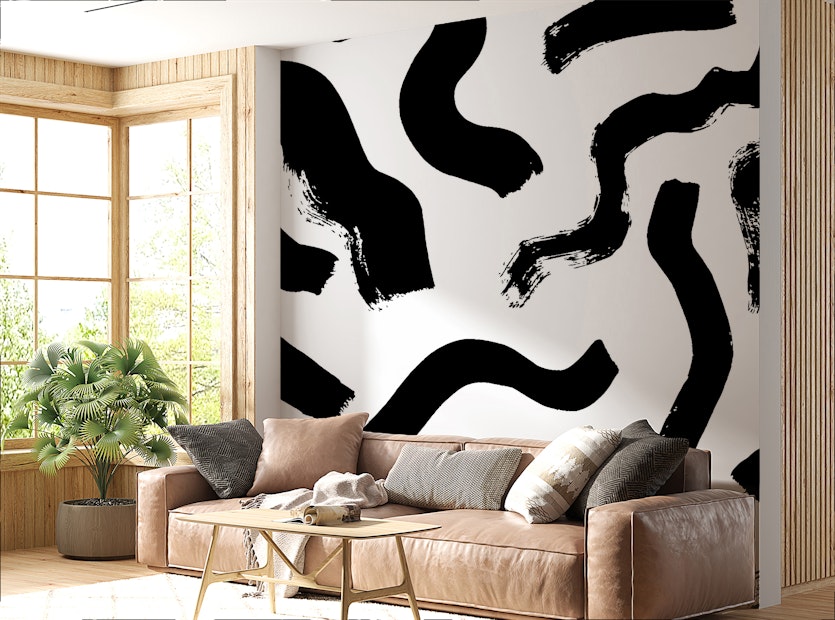Art Deco is one of the most iconic design styles of the 20th century, known for its bold geometric shapes, abundant materials, and vibrant colors. Originating in the 1920s, it drew inspiration from the technological advancements and cultural shifts of the time, blending them into a simultaneously luxurious and modern style. Art Deco wallpaper has experienced a revival in interior design, mainly through geometric patterns that bring elegance, sophistication, and a touch of vintage flair to contemporary spaces.
In this blog, we’ll explore the beauty of Art Deco wallpaper, focusing on its geometric patterns. We’ll also look at how this distinctive wallpaper style can complement other popular design aesthetics like Bohemian, religious, and artistic wallpaper. We’ll also discuss how architectural influences play a role in geometric wallpaper designs and how you can incorporate them into your home.
The Allure of Geometric Patterns in Art Deco Wallpaper
Geometric patterns are at the heart of Art Deco wallpaper, making bold statements through symmetry, sharp lines, and eye-catching forms. The designs are often intricate, featuring zigzags, chevrons, trapezoids, and diamonds, all arranged to draw the eye and create a sense of movement. This style reflects the industrial optimism of the 1920s, a period marked by progress and innovation, where even the simplest shapes took on grandeur through meticulous arrangement and repetition.
Geometric wallpaper in the Art Deco style is particularly striking because it uses contrasting colors and metallic accents. Gold, silver, black, and deep jewel tones are common, giving the patterns a luxurious feel. These wallpapers work especially well in spaces that aim to evoke a sense of drama and sophistication, such as living rooms, dining areas, or entryways.
Mixing Art Deco with Bohemian Wallpaper
While Art Deco wallpaper is characterized by its structured, precise patterns, Bohemian wallpaper presents a more relaxed, eclectic aesthetic. It’s typically associated with free-spirited designs, natural elements, and warm, earthy tones. Yet, despite their differences, Art Deco and Bohemian styles can be harmoniously combined to create unique and visually stunning interiors.
For example, you can use geometric wallpaper as a feature wall in a Bohemian-inspired room. The structured patterns of Art Deco wallpaper will create a dynamic contrast with Bohemian wallpaper's softer, more organic elements, such as floral designs, botanical prints, or abstract shapes. This mix of styles brings balance, adding structure to the laid-back feel of Bohemian decor while keeping things fresh and exciting. Incorporating vintage furniture, layered textiles, and plenty of greenery will further enhance this eclectic blend.
Religious Wallpaper: Finding Inspiration in Sacred Geometries
Another fascinating way to use Art Deco wallpaper is to connect it to religious wallpaper designs. Sacred geometry has long been a feature of religious art and architecture, appearing in places of worship worldwide. These designs, often made up of intricate, repeating shapes and patterns, are thought to represent the divine and the infinite.
Incorporating religious wallpaper with geometric patterns into an Art Deco-inspired interior can create a modern and spiritual space. Whether you choose a design that directly references sacred geometry or a more abstract artistic wallpaper with geometric elements, this combination can add a deep sense of meaning and symbolism to your space. Such wallpapers work well in meditation rooms, home offices, or anywhere you want to invoke a sense of calm and reverence.
The Architectural Influence on Art Deco Wallpaper
The architectural designs of the Art Deco period were heavily influenced by geometric forms, often drawing from ancient civilizations such as the Egyptians, Greeks, and Aztecs. The towering skyscrapers of the 1920s and 1930s, such as the Empire State Building and the Chrysler Building, feature strong lines, angular shapes, and intricate ornamentation, all hallmarks of Art Deco architecture.
These architectural elements translated beautifully into Art Deco wallpaper designs, which often mimic the grandeur and structure of the buildings of that era. Architecture wallpaper with geometric patterns can add a sense of scale and proportion to a room, making small spaces more extensive and organized.
Using geometric wallpaper inspired by Art Deco architecture in your home can help you create a sophisticated space rooted in history. Pairing it with sleek, modern furniture will give your space a fresh, updated look while still honoring the vintage elements of the design. Alternatively, using rich materials like velvet, marble, or glass can amplify the luxurious feel of the room.
Artistic Wallpaper: Making a Statement with Art Deco
Art Deco has always been associated with the world of fine arts, and its influence on artistic wallpaper designs is undeniable. Many Art wallpaper patterns feature motifs from the visual arts, including abstract forms, cubist-inspired designs, and stylized representations of nature. These wallpapers act as statement pieces, transforming walls into canvases that capture the spirit of the Art Deco movement.
To create a gallery-like effect in your home, consider using contemporary wallpaper in combination with geometric Art Deco designs. A striking feature wall adorned with Art Deco wallpaper in a bold geometric pattern can serve as the backdrop for a carefully curated selection of art pieces, sculptures, or photographs. This layering of artistic influences will make your space feel like a living, breathing work of art.
Conclusion
Incorporating Art Deco wallpaper into your home is a sure way to make a bold design statement. The geometric patterns at the core of this style evoke a sense of luxury, sophistication, and timelessness. Whether combining it with the eclectic feel of Bohemian wallpaper, the spiritual depth of religious wallpaper or drawing inspiration from architectural or artistic wallpaper designs, the possibilities are endless.
By embracing the beauty of geometric wallpaper, you can transform your space into a reflection of the past, present, and future—bold, beautiful, and undeniably chic.






Comments